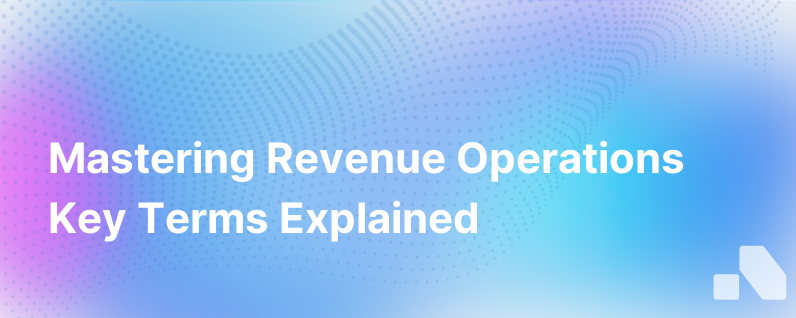
For startups and established businesses alike, revenue operations, or RevOps, serves as the central nervous system orchestrating sales, marketing, customer success, and overall growth. As the disciplines within RevOps continue to mature, the terminology becomes more specialized and complex. To help demystify this pivotal field, we have compiled the third installment of the Revenue Operations Glossary—a comprehensive guide to the jargon and concepts fueling modern sales engines.
Customer Relationship Management (CRM)
CRM systems are foundational to RevOps. They act as a single source of truth regarding customer data—tracking interactions, managing customer relationships, and often serving as a platform for additional operations software.
Sales Enablement
Sales enablement encompasses the processes, content, and technology that empower sales teams to sell efficiently at a higher velocity. This includes training, content creation, and tools that assist salespeople in engaging with prospects effectively.
Sales Engagement Platforms (SEPs)
These platforms sit on top of CRM systems to automate and streamline communication with prospects and customers. Features can include email sequencing, call dialing, social outreach, and engagement analytics.
Key Performance Indicator (KPI)
KPIs are critical metrics selected to assess the effectiveness and success of an organization's activities in reaching targets. In RevOps, common KPIs include Customer Acquisition Cost (CAC), Customer Lifetime Value (CLV), and Monthly Recurring Revenue (MRR).
Account-Based Marketing (ABM)
ABM is a strategic approach to business marketing in which an organization considers and communicates with individual prospect or customer accounts as markets of one. This can include targeted campaigns and personalized engagement strategies.
Account-Based Sales Development (ABSD)
ABSD is an approach in which sales teams treat individual prospect accounts as a market in their own right, mirroring the ABM strategy for establishing and expanding customer relationships through personalized outreach and engagement.
Account-Based Execution (ABX)
ABX represents the seamless execution of account-based strategies across marketing, sales, and customer success. This holistic approach creates a unified customer experience from first touch to renewals and beyond.
Data Hygiene
This is the practice of keeping customer and prospect data clean, standardized, and updated across RevOps systems to ensure accuracy and reliability in reporting and decision-making.
Market Segmentation
The process of dividing a target market into approachable groups or segments, based on characteristics such as demographics, firmographics, customer behaviors, and purchase history.
Sales Process Optimization
A systematic approach to refining the stages of a sales process for efficiency and effectiveness, often using data analysis and RevOps tools to reduce friction and enhance sales productivity.
Sales Forecasting
The practice of predicting future sales revenue over a specific period, which aids in resource allocation, budgeting, and strategic planning. This uses historical data, industry trends, and sales pipeline analysis.
Quote-to-Cash (QTC)
This term refers to the end-to-end process within a company's sales cycle that starts with sales quotes and ends with revenue collection. It encompasses pricing, contracts, invoicing, and payment processing.
Revenue Recognition
The accounting principle that outlines the specific conditions under which revenue is recognized. In RevOps, this governs when a sale should be recorded: at the time of transaction, upon delivery of goods, or across the duration of a service.
Customer Success
A function within RevOps focusing on the relationship with the customer, aimed at helping them achieve their goals using your product or service, thus maximizing customer lifetime value and reducing churn.
Churn Rate
The measure of the number of customers or subscribers who cut ties with your service or company during a given time period. A low churn rate is critical for sustained growth.
Renewal Rate
This is a metric in the SaaS and subscription-based business models that indicates the percentage of customers who renew their subscriptions at the end of their contract term.
Customer Health Score
A quantifiable measure of how healthy and engaged a customer is, looking at factors such as product usage, customer satisfaction, and overall relationship strength.
Sales Velocity
A measure of how quickly a business is making money, factoring in the number of opportunities, average deal value, win rate, and length of the sales cycle.
Revenue Leakage
This refers to the loss of revenue due to various factors such as unbilled services, underpricing, or lost opportunities, often caused by inefficiencies in the RevOps process.
Revenue Operations Platform
An integrated software solution that combines CRM, sales enablement, SEPs, and data analytics, designed to maximize revenue potential by aligning and optimizing all customer-facing teams.
Conversion Rate Optimization (CRO)
Tactics used to improve the percentage of website visitors who take a desired action, which can include filling out a form, making a purchase, or any other goal of a webpage.
Lifecycle Stages
These define the progression of leads from prospect to customer and are essential for segmenting communication strategies. Common stages include Subscriber, Lead, Marketing Qualified Lead (MQL), Sales Qualified Lead (SQL), Opportunity, Customer, and Evangelist.
Unit Economics
A detailed analysis of the profitability of an individual unit, such as a customer account or transaction, which can be critical in evaluating business models and growth strategies.
Revenue Stack Management
The practice of selecting, integrating, and managing the suite of tools and technologies used across RevOps to drive revenue growth and operational efficiency.
By familiarizing yourself with these RevOps terms, you're better equipped to navigate the complex ecosystem of strategies and tools that drive business growth. Whether you're optimizing your own RevOps capabilities or considering leveraging Aomni to improve your sales strategy, understanding these concepts is crucial to achieving operational excellence and sustaining long-term revenue growth.